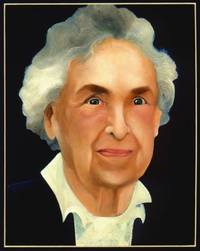


Her father promoted her scientific and technical talent and thus laid the foundation for a Career in chemistry. However, she did not receive the international recognition that Erika Cremer deserved.
Erika Cremer was born on May 20, 1900 in Munich. Her father Max Cremer (1865-1935) was a well-known physiology professor who helped develop the glass electrode. He encouraged his children's interest in science and technology at an early age and with great success: Not only Erika Cremer, later professor of Physical Chemistry at the University of Innsbruck, made a Career in science. Her older brother Hubert (1897-1983) became professor of mathematics and large computer systems at RWTH Aachen University, her younger brother Lothar (1905-1990) was professor of technical acoustics at TU Berlin and also director of the Heinrich Hertz Institute of Fraunhofer Society.
When Max Cremer accepted a position at Berlin University in 1911, the entire family moved to the German capital. Cremer passed his Abitur in 1920 at a college for young women in which the natural sciences were highly valued. She then studied chemistry, Physics and mathematics in Berlin. She wrote her doctoral thesis, in which she researched the chlorine oxyhydrogen reaction, under the renowned physical chemist Max Bodenstein (1871-1942). She obtained her doctorate in 1927.
In her scientific wandering years, the young chemist mostly worked unpaid, for example with the later Nobel Prize winner Georg Karl von Hevesy (1885-1966) in Freiburg and Michael Polanyi (1891-1976) at the Kaiser Wilhelm Institute (KWI) for Physical Chemistry and Electrochemistry in Berlin. In 1936, Cremer returned to her actual research focus, the explosive chain reaction between hydrogen and chlorine. Among other things, she worked for Otto Hahn (1879-1968) at the KWI for Chemistry in Berlin. During this time she wrote the highly regarded article "On the history of the unleashing of nuclear energy" in the Österreichische Chemiker-Zeitung in 1989.
Cremer completed her habilitation in 1939 against the will of the dean. In the following year she moved to the Leopold-Franzens-University in Innsbruck, where she received the license to teach and at the same time entered the civil servant status on revocation - but initially without salary. In 1945 she took over the provisional management of the physico-chemical institute. Six years later she was appointed associate professor and head of the institute. It was not until 1959 - over three decades after completing her doctoral thesis - that the University of Innsbruck appointed Cremer full professor of Physical Chemistry. She held this professorship until her retirement in 1970.
Erika Cremer is considered to be the inventor of gas chromatography, the scientific basis of which she developed primarily together with her student Fritz Prior. Although Cremer published over 200 scientific articles, international recognition came slowly and with great delay. While the two British chemists Archer JP Martin (1910-2002) and Richard LM Synge (1914-1994) received the Nobel Prize in Chemistry in 1952 for their work on gas, column and paper chromatography, Cremer missed out. At the same time, she played a key role in driving the development of new analysis techniques. The technical implementation of the processes she developed was always important to Cremer, which is why she cooperated with chemical and pharmaceutical companies as well as with manufacturers of analysis devices.
Cremer was never married and remained childless. She devoted all her energy to research and teaching. During her work in Innsbruck she supervised over 70 doctoral students and four post-doctoral students. One of her students described her style as follows: ?She loved chaos, entropy was always a popular term. She had ideas, she was brilliant, that was her strength. ?Erika Cremer died on September 21, 1996 in Innsbruck.
a notice
The texts published in this series do not claim to be scientific publications. Authors and other people involved are not experts in the history of science. The purpose of the series is to introduce the mostly unknown women chemists and to remind you of the well-known women chemists. We encourage readers who want to know more to study academic Literature on the women featured. In some cases there are detailed chemical-historical works.
authors
Prof. Dr. Eberhard Ehlers
Prof. Dr. Heribert Offermanns
Editorial processing
Dr Uta Neubauer
project management
Dr Karin J. Schmitz (GDCh public relations)
The authors are responsible for the content of the biographies.
The content presented on these pages has been carefully compiled. However, the authors, Editorial staff and publishers assume no responsibility or liability for the completeness and correctness of the content or for typographical errors.
Photo: Letizia Mancino Cremer, Erika Cremer by Letizia Mancino Cremer, CC BY-SA 4.0
back to overview biographies of women chemists
back to publications
This page has been machine translated. If you have any feedback or comments please feel free to contact us. 
last modified: 10.05.2021 16:19 H from K.J.Schmitz